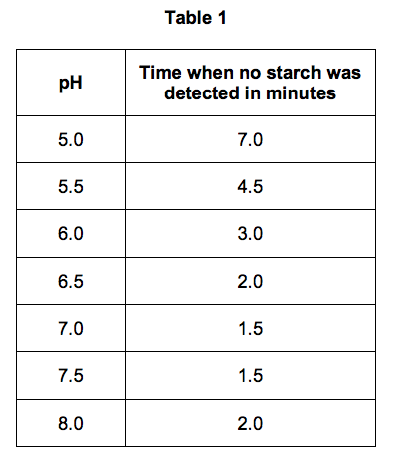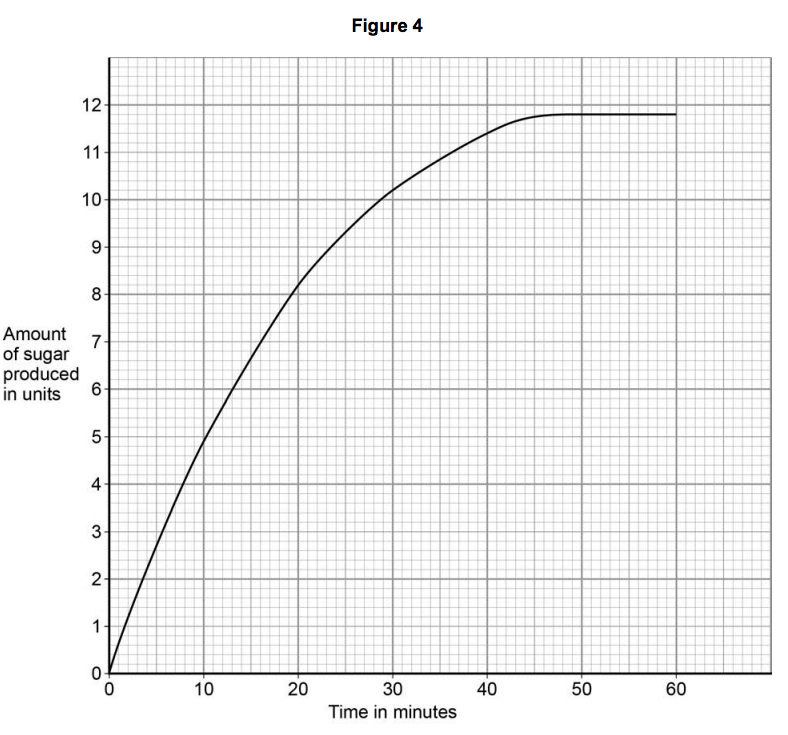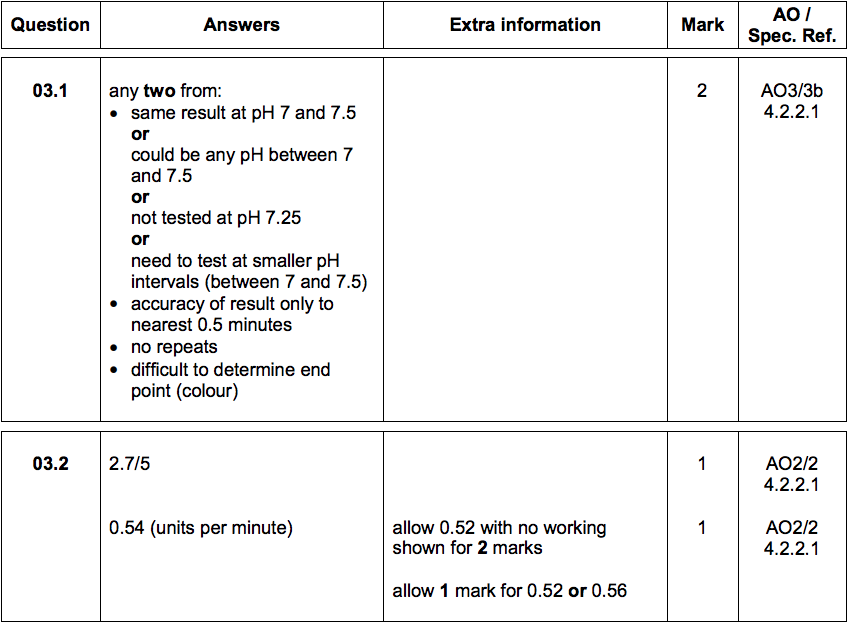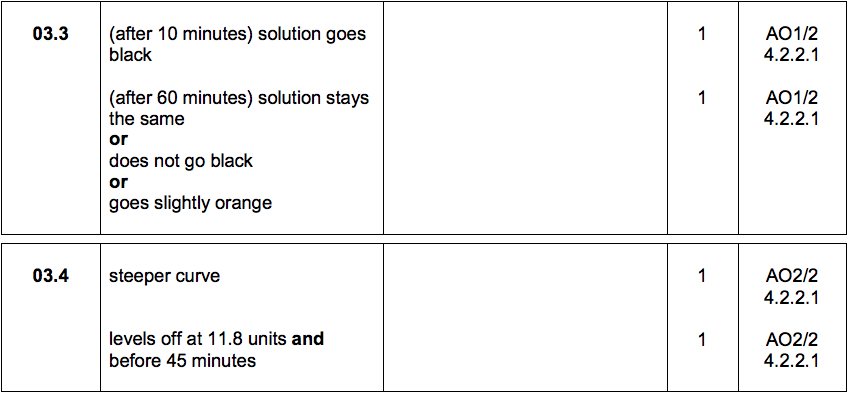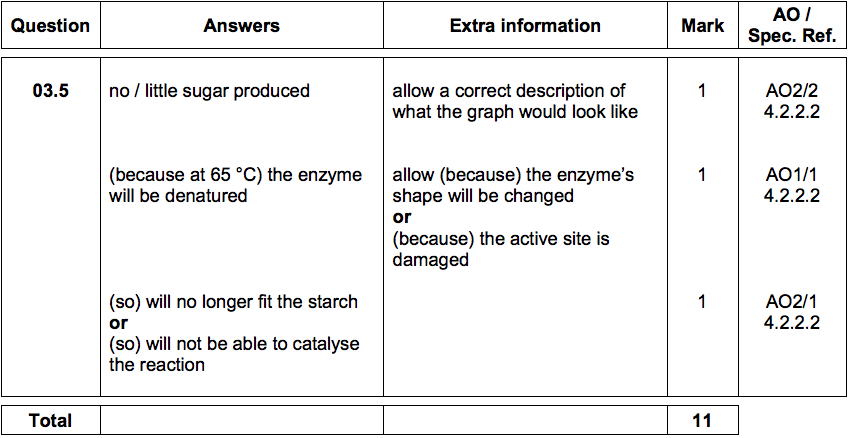2.1 - SPECIMEN SET B1 Q3 Answers
3) Amylase is an enzyme that digests starch.
A student investigated the effect of pH on the activity of amylase.
This is the method used.
Table 1 shows the students’ results.
A student investigated the effect of pH on the activity of amylase.
This is the method used.
- Mix amylase solution and starch suspension in a boiling tube.
- Put the boiling tube into a water bath at 25 °C.
- Remove a drop of the mixture every 30 seconds and test it for the presence of starch.
- Repeat the investigation at different pH values.
Table 1 shows the students’ results.
3.1) The student concluded pH 7.25 was the optimum pH for the amylase enzyme.
This is not a valid conclusion.
Suggest two reasons why. [2 marks]
1. ______________________
2. ______________________
This is not a valid conclusion.
Suggest two reasons why. [2 marks]
1. ______________________
2. ______________________
The student did another investigation.
This is the method used.
3.2) Calculate the mean rate of sugar produced per minute during the first 5 minutes. [2 marks]
This is the method used.
- Put amylase solution and starch suspension into a boiling tube.
- Make the pH 7.25.
- Put the boiling tube into a water bath at 25 °C.
- Measure the amount of sugar produced every 30 seconds.
3.2) Calculate the mean rate of sugar produced per minute during the first 5 minutes. [2 marks]
Mean rate = _____________ units per minute
3.3) Iodine solution is added to a sample taken from the boiling tube after 10 minutes and 60 minutes.
Suggest what you would see in these samples. [2 marks]
After 10 minutes ________________________
After 60 minutes ________________________
3.4) The scientist repeated the investigation at 37 °C. Draw a line on Figure 4 to show the results the scientist would get. [2 marks]
3.5) The same investigation was done at 65 °C. How would this affect the results? Explain why. [3 marks]
(Total for Question 3 = 11 marks)
Suggest what you would see in these samples. [2 marks]
After 10 minutes ________________________
After 60 minutes ________________________
3.4) The scientist repeated the investigation at 37 °C. Draw a line on Figure 4 to show the results the scientist would get. [2 marks]
3.5) The same investigation was done at 65 °C. How would this affect the results? Explain why. [3 marks]
(Total for Question 3 = 11 marks)

